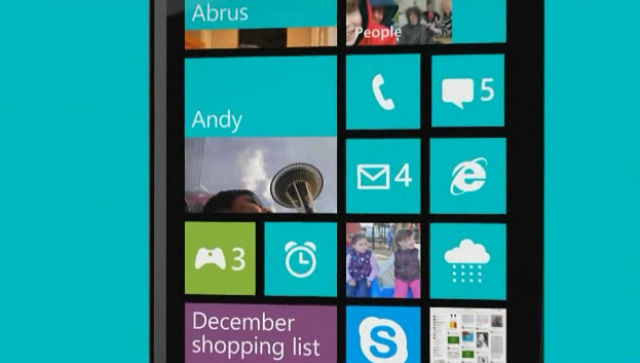Since Microsoft unveiled key aspects of Windows Phone 8 yesterday the company has received some flak for not allowing current generation Windows Phones to get the new operating system in full. Instead, handsets running Mango will get updated to Windows Phone 7.8, which brings the new start screen, continued updates, new apps, and more details will follow nearer the release date. While some users feel betrayed by buying a new handset like the Nokia Lumia 900 only to find it won’t receive Windows Phone 8, Microsoft is right in its decision.
The reason for the ire against Microsoft is because today people buy a phone and expect it to receive software updates in future. However, a look at competing systems shows it isn’t rosy for them either. Android is well known for its fragmentation, and there are modern Android phones that are at least one or two software updates behind the latest. Ice Cream Sandwich was supposed to be the operating system that changed that, but Gingerbread is still the most widely used Android software on the market. To make matters worse, while Microsoft is offering Windows Phone 7.8 to existing users, Google offers nothing to handsets that can’t get a full update. It also often leaves the update process to OEMs and carriers, whereas Microsoft is offering Over The Air (OTA) updates to bypass the carriers. This means that all Windows Phone users will be getting something, while a competing provider often offers nothing.
Microsoft’s approach also circumvents Apple’s problematic approach. Apple does not offer all features to all phones, even if it can run – Siri was an app that worked fine on the iPhone 4, but when Apple baked it into the OS they made it so it can only work on the 4S, forcing users who wanted it to upgrade. When the company offered iOS5 to the 3G and 3GS handsets, the Internet was awash with disgruntled customers who had notice a massive decline in performance and speed of their phones, because the hardware wasn’t capable of running it properly.
So what Microsoft has done is the sensible option – release a “Windows Phone 8 lite” for existing handsets so that the features that will run will be provided, and anything that can’t be provided will be reserved for new handsets. While it isn’t yet known exactly what features will be coming in 7.8, like Skype integration, at least users know they will definitely get an update to improve their experience, which is not true of Android users. Most of the changes in Windows Phone 8 are hardware related, like MicroSD support, multi-core support, higher screen resolutions and NFC, and of course these changes cannot come to existing phones just like previous iPhones did not sprout a front-facing camera or Retina display when Apple announced them. Indeed, this is a main point in the online discussion of events – while the tech blogs are quick to bash Microsoft’s decision, when Apple does something similar or even worse to its mobile consumers, silence ensues.
More to the point, Microsoft’s changes were wholly necessary. The existing kernel for Windows Phone does not allow for the seamless integration and interaction between Windows Phone and Windows 8, so a change had to be made. This change was better to happen now while the userbase is relatively small rather than wait for the operating system to gain more marketshare. By causing this disturbance now, Microsoft has hopefully laid a path to prevent an identical situation happening in the future, and more importantly has laid a very solid foundation for users to enjoy an excellent product in the near future, with unparalleled communication between the phone, tablet and PC. While some users may be peeved that they’re not getting Windows Phone 8 in full, the upshot is that a very new experience in computing will come out of it.

